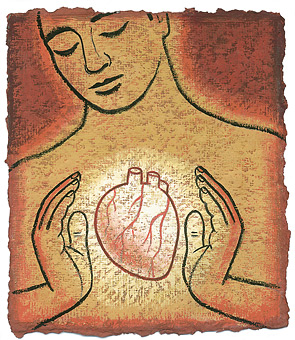
The other day I spoke to Dr. Arthur Agatston, creator of the South Beach Diet, and he scared me. I'm glad he did. I'm a 37-year-old man with a family history of heart disease, and the good doctor quickly rattled off several things that I should already be thinking about in terms of preventing a heart attack or stroke. And his concern is not just directed at me. Agatston is an ambitious man. He's written seven books and maintains a full-time cardiology practice, but now has his sights set higher—on healing the entire country. He believes that with a few simple steps he can help eradicate heart disease and stroke in the U.S. He writes all about it in his latest book, The South Beach Heart Program (Rodale).
Agatston acknowledges that most doctors and patients already know what is right for them in terms of diet and exercise. The problem, he contends, is that we have become a nation too focused on treating heart disease and stroke rather than preventing them. He points to what he calls a "disincentive to practice prevention" within the medical profession. Primary-care doctors are constantly in firefighter mode, rushing to the scene of a patient's health disaster, instead of spending the time to counsel patients about the best diet and prevention program.
For example, not enough doctors prescribe niacin for their heart patients, even though the medicine is a proven treatment for raising "good" cholesterol. Physicians are reluctant, Agatston suggests, because niacin requires diligent follow-up to watch for side effects, taking time that most primary-care practices cannot afford. On the other hand, he says, too many doctors are performing heart operations that represent a financial windfall for hospitals. Bottom line: there isn't as much money to be made in prevention as in treatment.
The South Beach Heart Program is the book Agatston first wanted to write. Instead he got sidetracked by his famous diet book, which has sold more than 8 million copies since it came out in 2003. He has been thinking about this new book since the late 1980s, when the first heart scans were developed. Now, almost two decades later, we know better how to use the technology and, he tells me, have a real shot at preventing the nearly 1 million heart attacks and 700,000 strokes that occur each year in the U.S. One big advance has been in the use of computed tomography angiography. This is a noninvasive heart scan that takes about 10 minutes and can tell you if you have any developing plaque in the vessels that supply blood to your heart. The trick is to get the test done before you experience any chest pains or other heart problems. And when you get a blood workup for your cholesterol profile, he advises, go the extra step and get the more sophisticated C-reactive protein test that measures the level of inflammation in your body. Cutting down on that inflammation greatly reduces your chance of having a heart attack or stroke.
As we were winding down our conversation, Agatston took off his author hat and went into full cardiologist mode again. By the time I am 40, he says, I should get one of these scans of my heart and have a full blood panel testing. Postmenopausal women over 50 should also be getting these tests, as heart disease remains the biggest killer of women as well as men. Finally, he says, we should all make sure to lose any excess belly fat, as it is an important predictor of heart disease. No problem there, I thought to myself...well, maybe a little bit of a problem. Time to get back to the basics: diet and exercise.